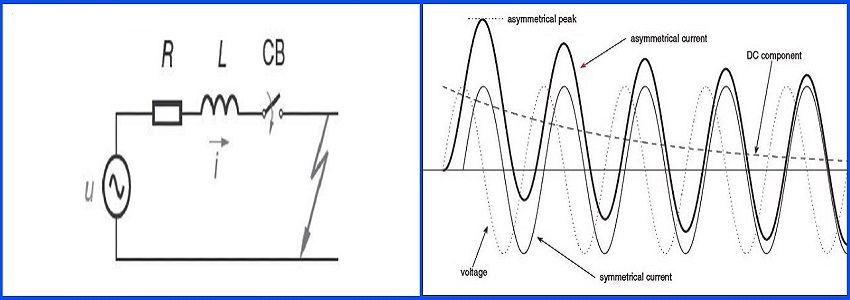
Asymmetrical current results from:
- A short-circuit in the system initiated by an external event or by an internal dielectric failure.
- Closing a switching device into an already faulted system, such as an earthing connection that is erroneously not removed after maintenance.
Both situations are electrically equivalent, the only difference being the load current that is, in the latter case, present before the initiation of the fault current.
The transient that arises from making a circuit appears as a DC component of the current.
The simplest circuit is shown in left fig.
Depending on the instant of short-circuit current initiation( voltage waveform), 2 extremes are possible:
- Short-circuit initiation is at voltage zero:
The DC component is at a maximum and causes a high asymmetrical-current peak. - Short-circuit initiation is approximately at voltage maximum:
The DC component is zero and the steady-state current is established immediately so-called symmetrical current. Perfect symmetrical conditions do not occur exactly at voltage maximum.
The asymmetrical-current peak factor is a function of the DC time constant and the frequency.
These extremes situations are depicted in right fig.



